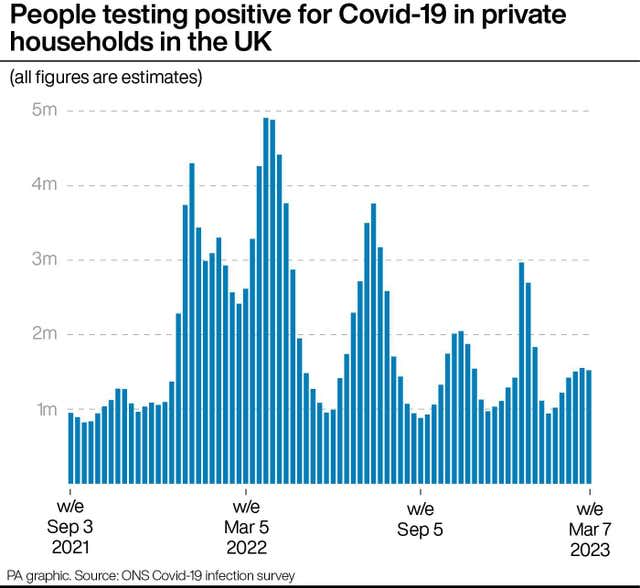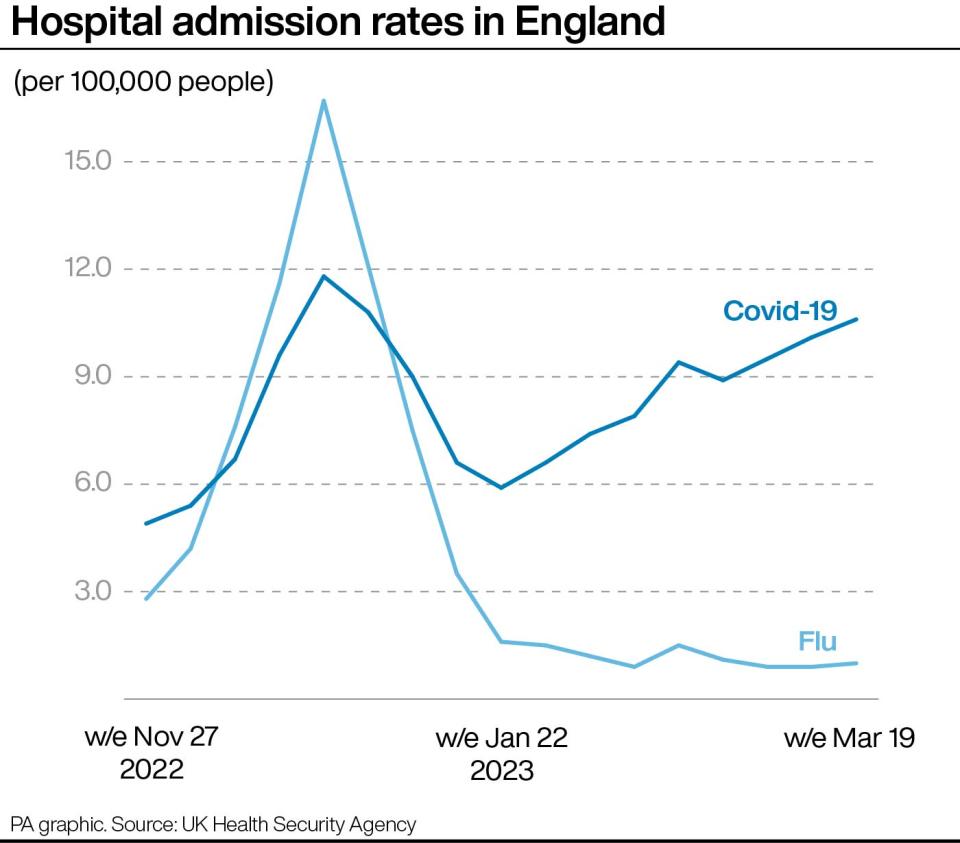‘Jewel in the crown’ Covid-19 infection survey bows out

Official estimates of UK Covid-19 infections will come to a halt on Friday – just as levels may be on the increase again.
The long-running coronavirus infection survey, dubbed the “envy of the world” for its success in measuring prevalence of the virus among the population, will publish its final regular update on March 24.
Any further monitoring of Covid-19 will be announced after a review to ensure it is “cost effective”, according to the UK Health Security Agency (UKHSA).
Statistical experts hailed the survey as the “jewel in the crown of UK science”, adding it is “vital” this kind of “trusted and reliable” resource is available in the future.

The infection survey has run continuously for nearly three years, providing valuable weekly data on levels of Covid-19 across the UK and allowing successive waves of the virus to be identified and tracked.
It has also supplied crucial information on the emergence of new variants, antibody levels and long Covid.
The survey collected tests from households regardless of whether participants knew they had Covid-19, or if they were reporting results to the NHS, meaning it provided a snapshot of the true spread of the virus, which was often underestimated by Government figures.
Sir David Spiegelhalter, emeritus professor of statistics at Cambridge University and chairman of the advisory board for the survey, told the PA news agency it had been an “extraordinary achievement” which has provided “vital evidence of great value both to national policy and international scientific understanding”.
He continued: “There is a general consensus that the survey has been a world-leading demonstration of how health surveillance can best be done. A loyal cohort of participants have provided repeated swabs, blood tests and symptom data – and if we did not test people without symptoms, how else would we know how many were infected and yet symptom-free?
“It is expensive, and this has led to it being paused, but the participant group is not being disbanded and a survey should be able to ramp up when necessary.
“Meanwhile there are important lessons to be learned for future emergencies, both by us and every other country. The survey has been the envy of the world and is a jewel in the crown of UK science.”
The halting of the survey comes as the rate of hospital admissions in England for people with Covid-19 rose for the third week in a row, to 10.6 per 100,000 people in the seven days to March 19.
This is the highest level since the start of year, UKHSA data shows.
The most recent figures from the infection survey, published last week, showed an uncertain trend for the seven days to March 7 across much of the UK, though levels have been on a broad upward path since the end of January.
The survey has been led by the Office for National Statistics (ONS) and was rolled out across the UK during summer 2020, just after the first wave of the virus.
It has measured every wave since then, with its figures revealing the biggest wave came in spring 2022 when weekly infections hit 4.9 million, followed by winter 2021/22, which peaked at 4.3 million.
In recent months the survey has helped track the scale and progress of the Christmas 2022 wave, which peaked at nearly three million infections, as well as the latest rise in prevalence of the virus.
Thomas House, professor of mathematical statistics at Manchester University and one of the academic collaborators on the survey, said that while he accepted it had been costly to run and there was a need to save money, it was a shame to see the project end at this point and not run for slightly longer.
“It would be good for us to have an ongoing big science project for the community surveillance of infection, given we were the first place in the world to attempt it,” he told PA.
“The survey was designed to be scaled up and down, so a better decision might have been to just scale it down for a bit – especially as we don’t know where Covid will settle in terms of long-term prevalence, and we don’t know what next winter is going to look like.

“We’re now in the phase of living with Covid, so we’re past the point where the survey could inform or change government policy decisions. But there is a case to be made for it continuing, just because it might identify something we really weren’t expecting.”
Mark Woolhouse, professor of infectious disease epidemiology at Edinburgh University, said the survey had been “one of the most trusted and reliable sources” of Covid-19 data.
He told PA: “The ONS performed active surveillance, making direct requests for individuals to participate, rather than the passive reporting that generated the daily case numbers shown on our TV screens during the height of the pandemic.
“Active surveillance is slower – the ONS survey was one to two weeks behind the daily numbers – but is considered more representative of the true situation.
“Despite its value to public health, active surveillance of this kind is expensive and is not routinely performed outside of an active health emergency. It is nevertheless vital that our capacity to perform this kind of survey is maintained and is available when needed.”
In the absence of official estimates of Covid-19 levels, hospital admissions will be one of the few remaining sources of data to give any sense of the prevalence, along with death registrations.

 Yahoo News
Yahoo News 
